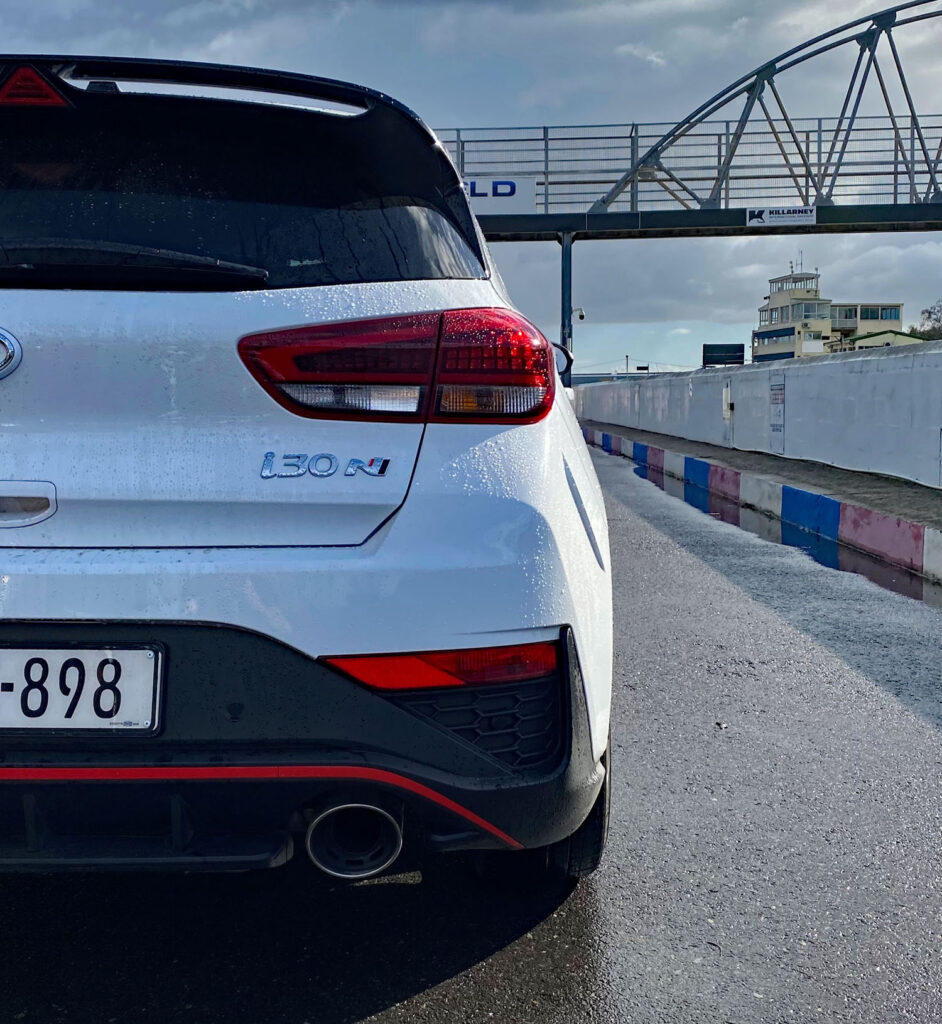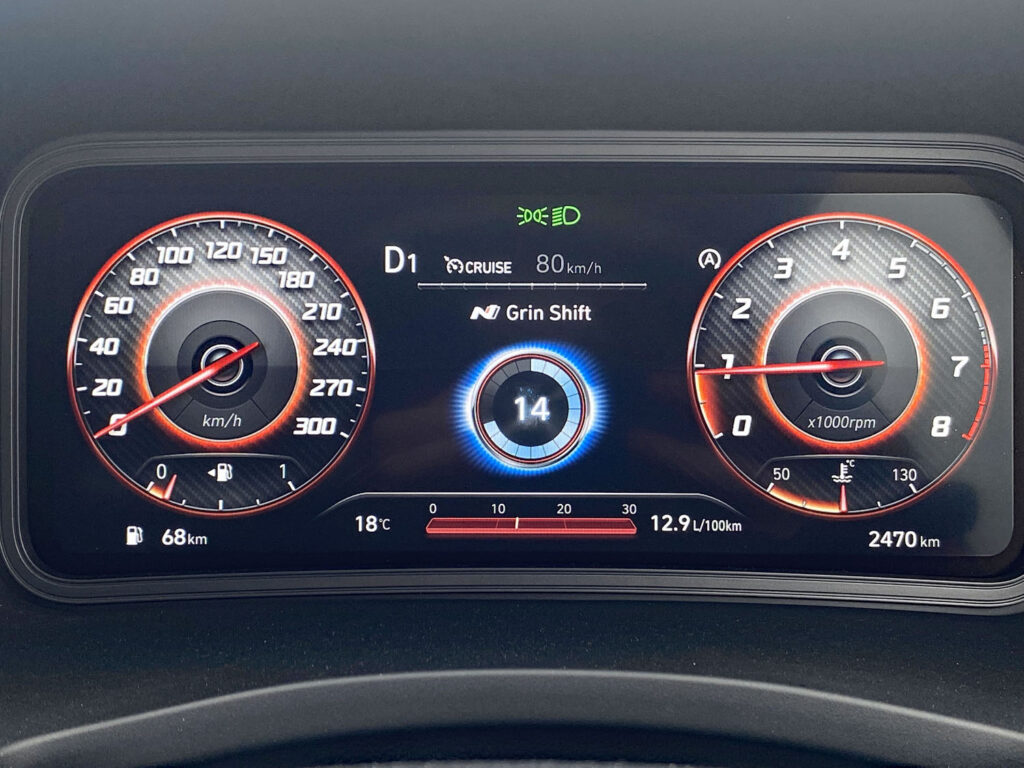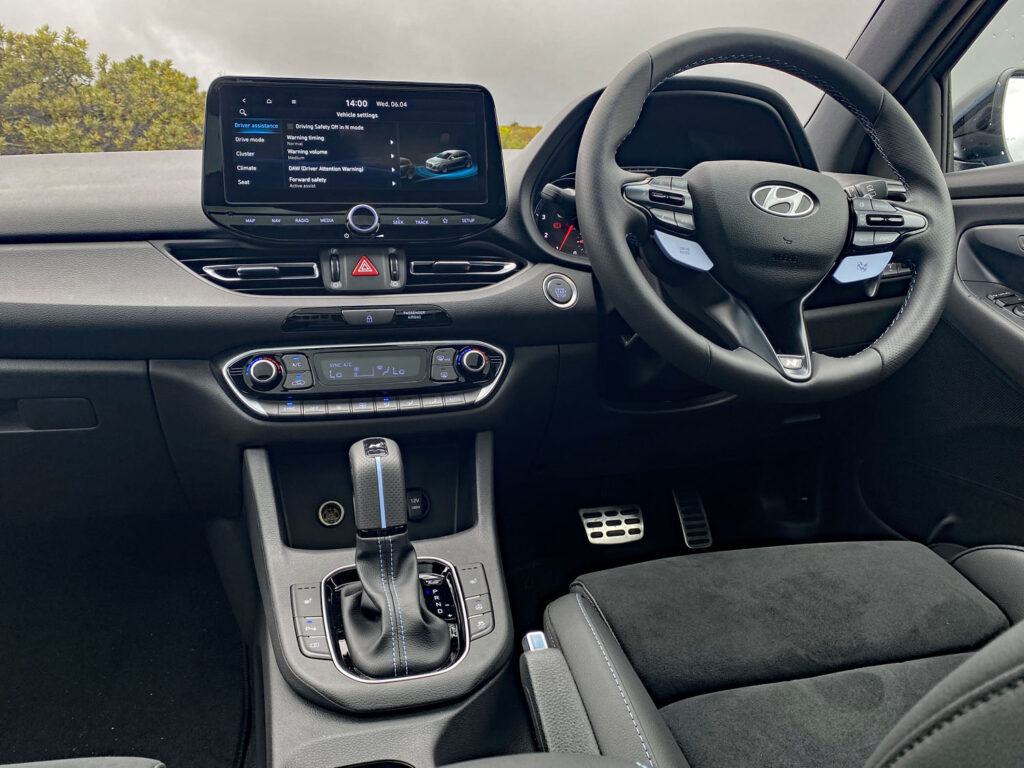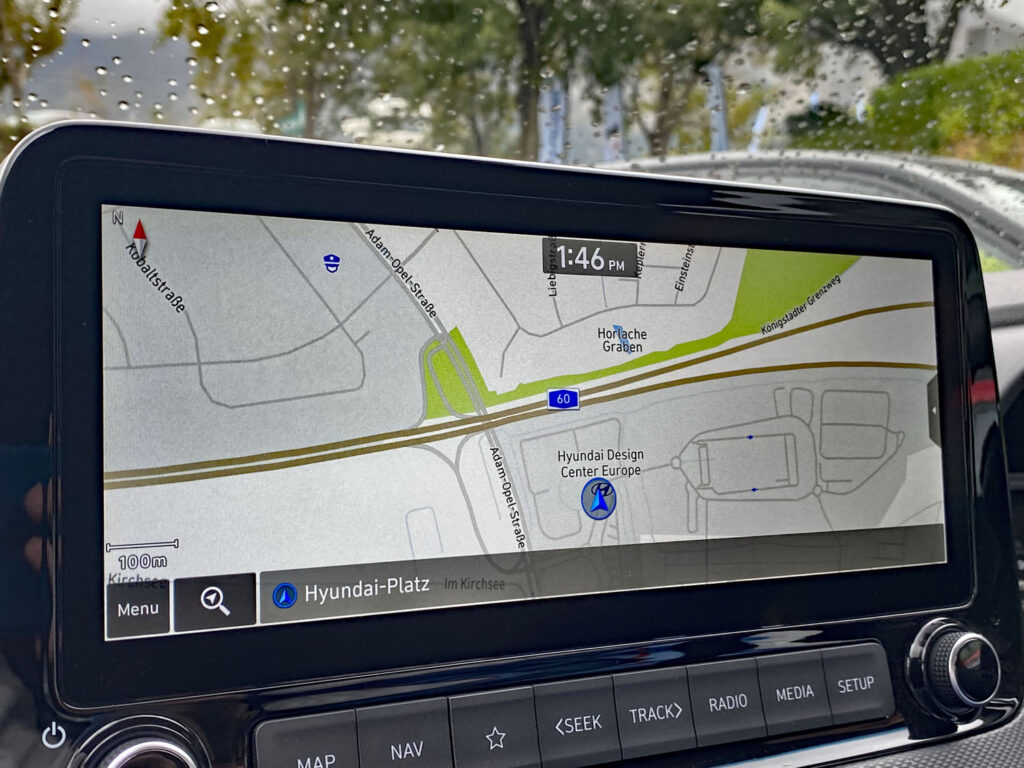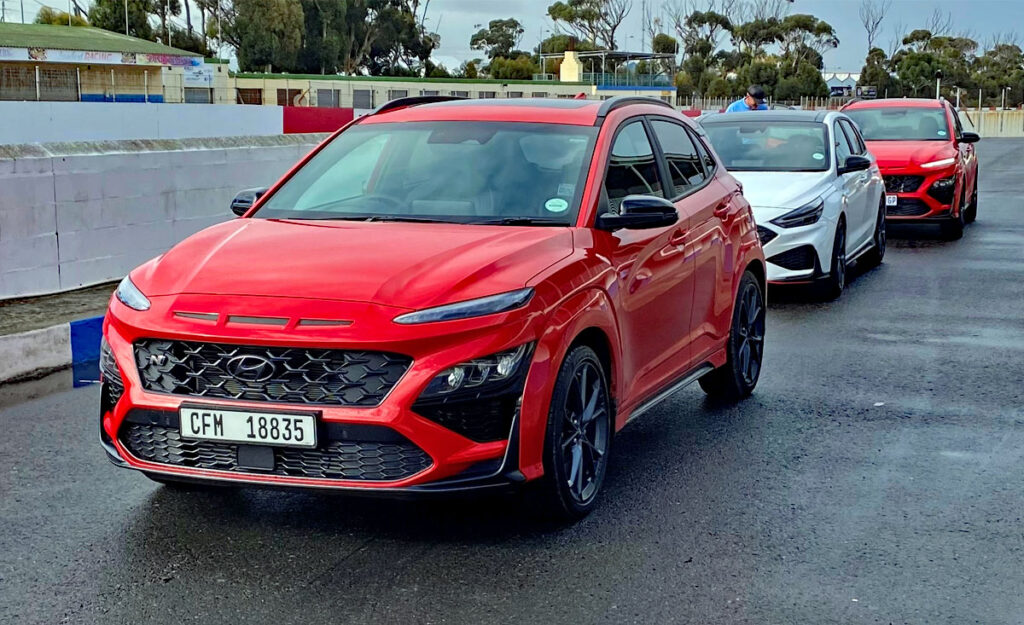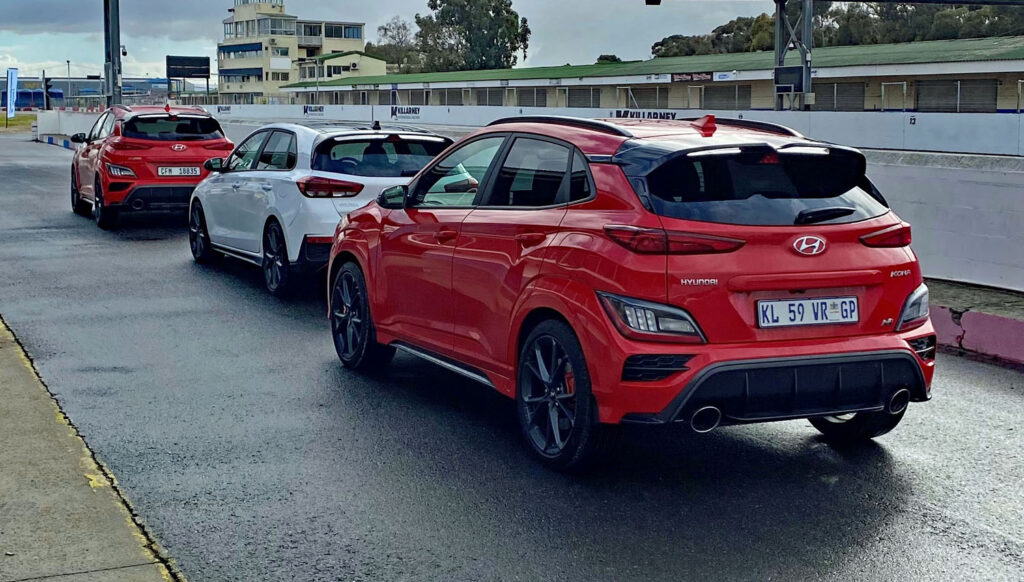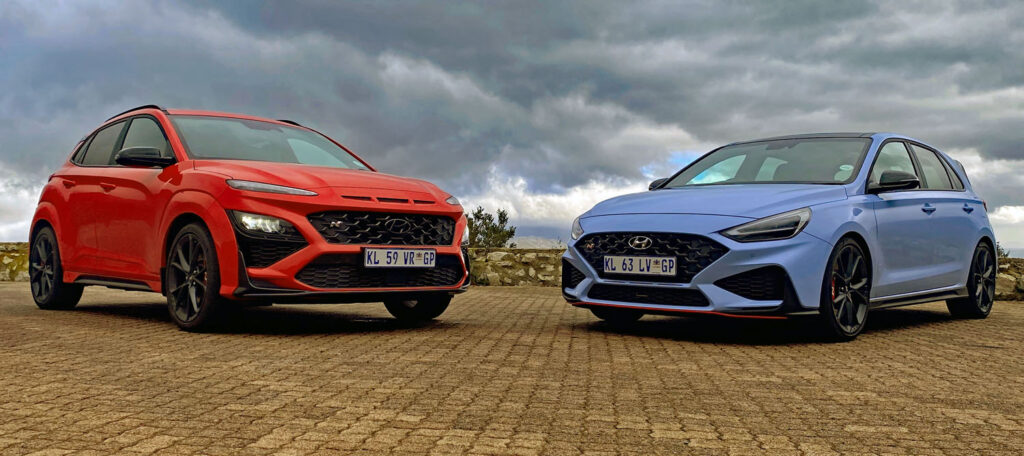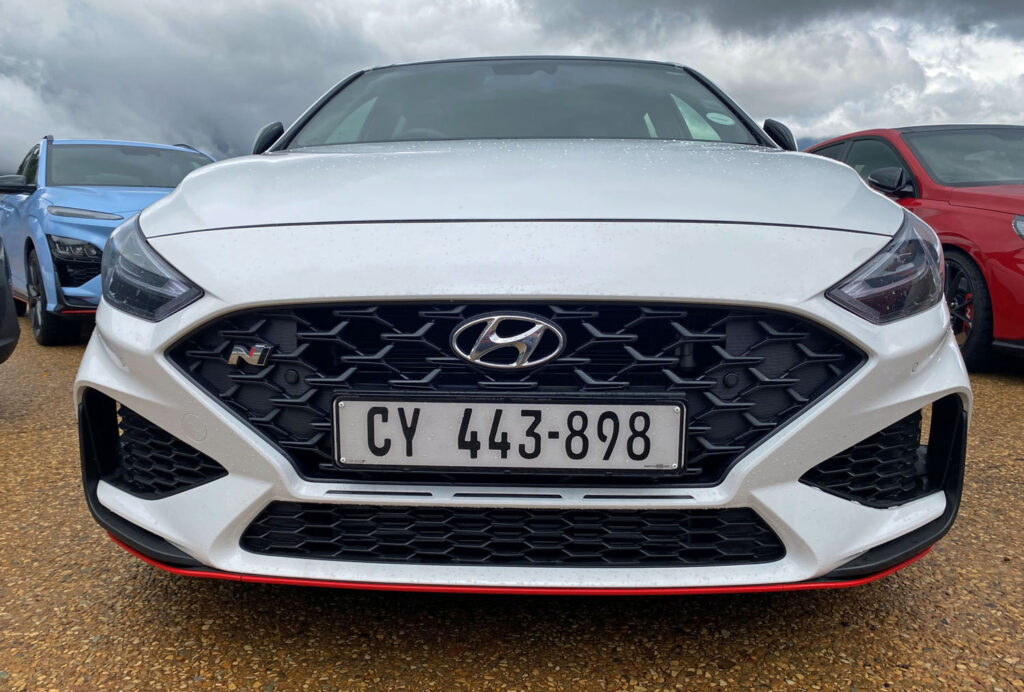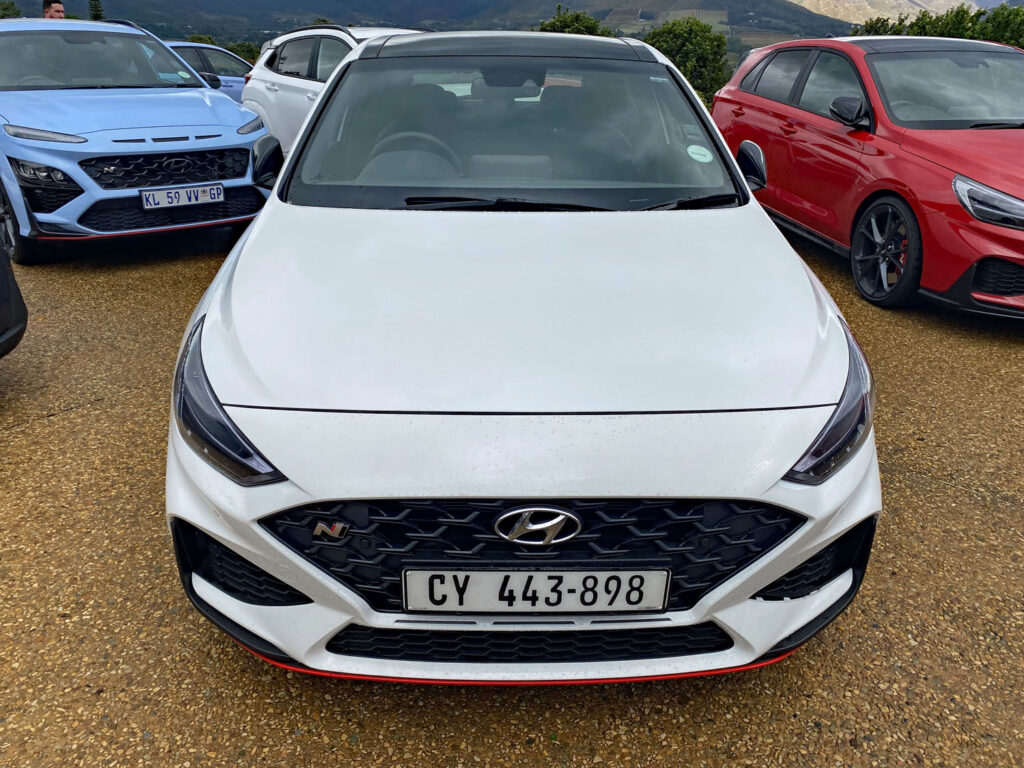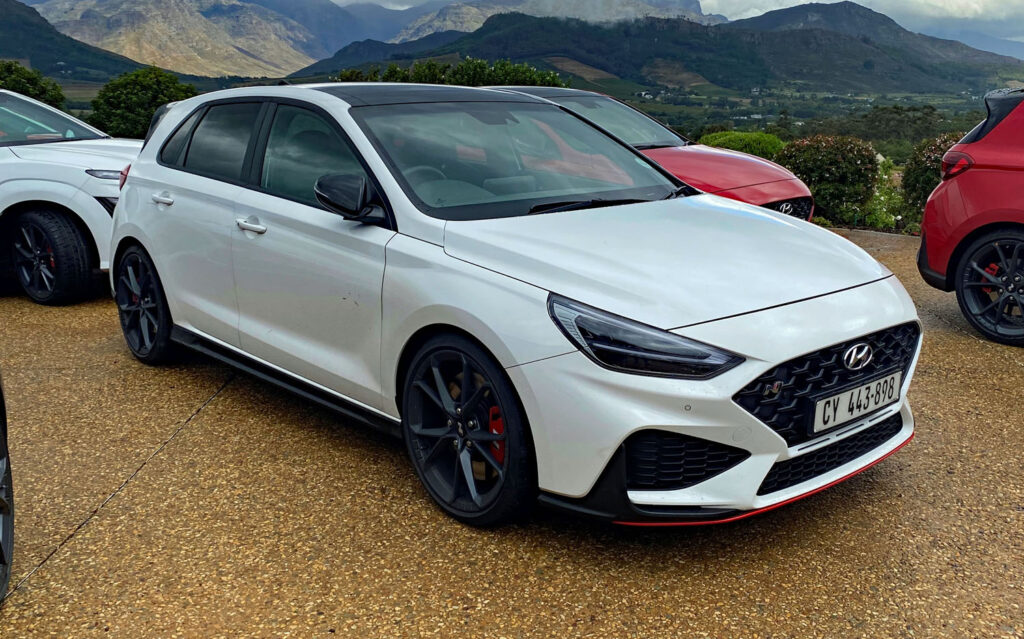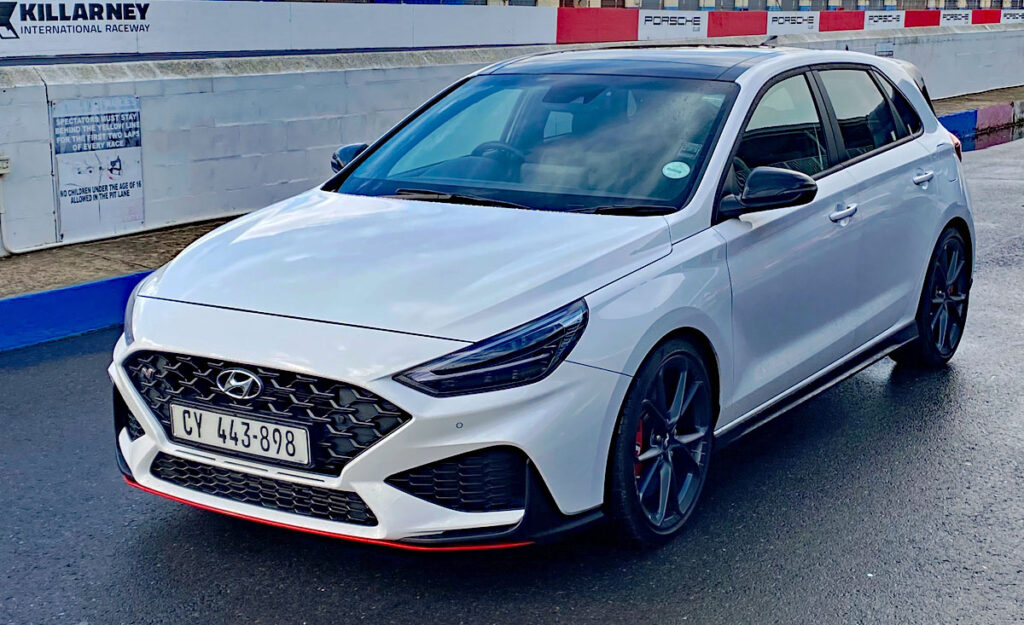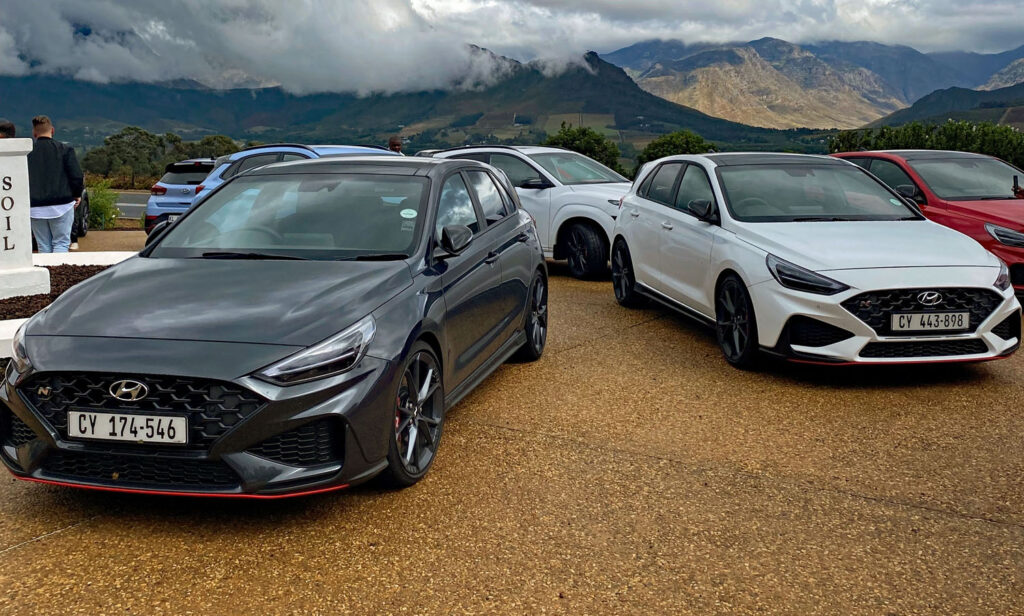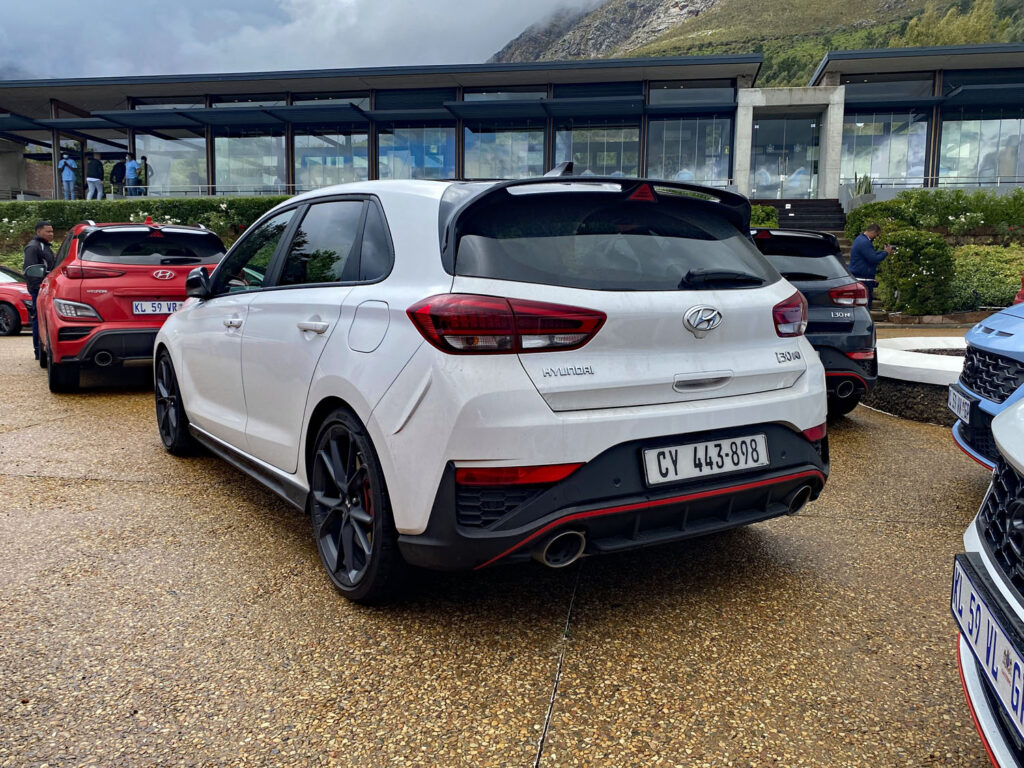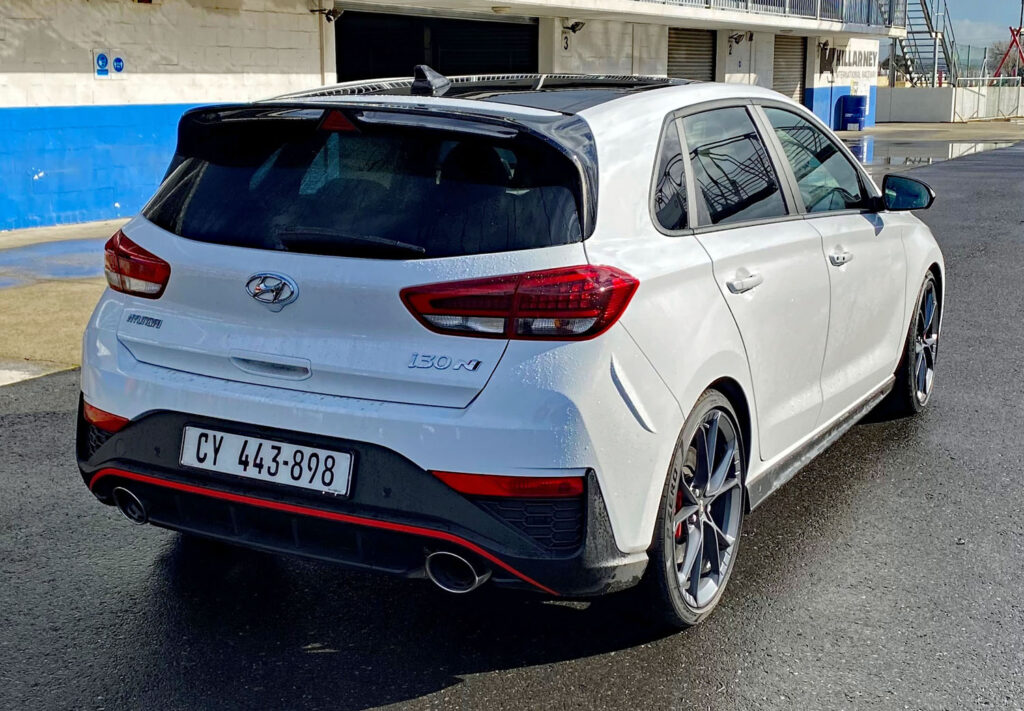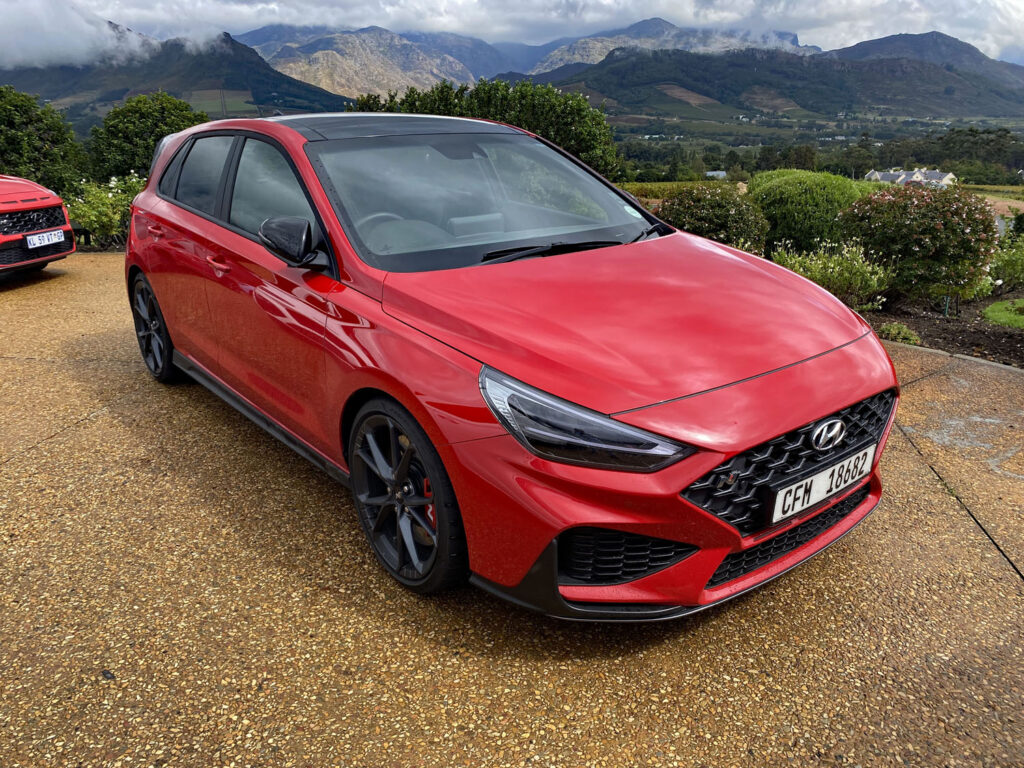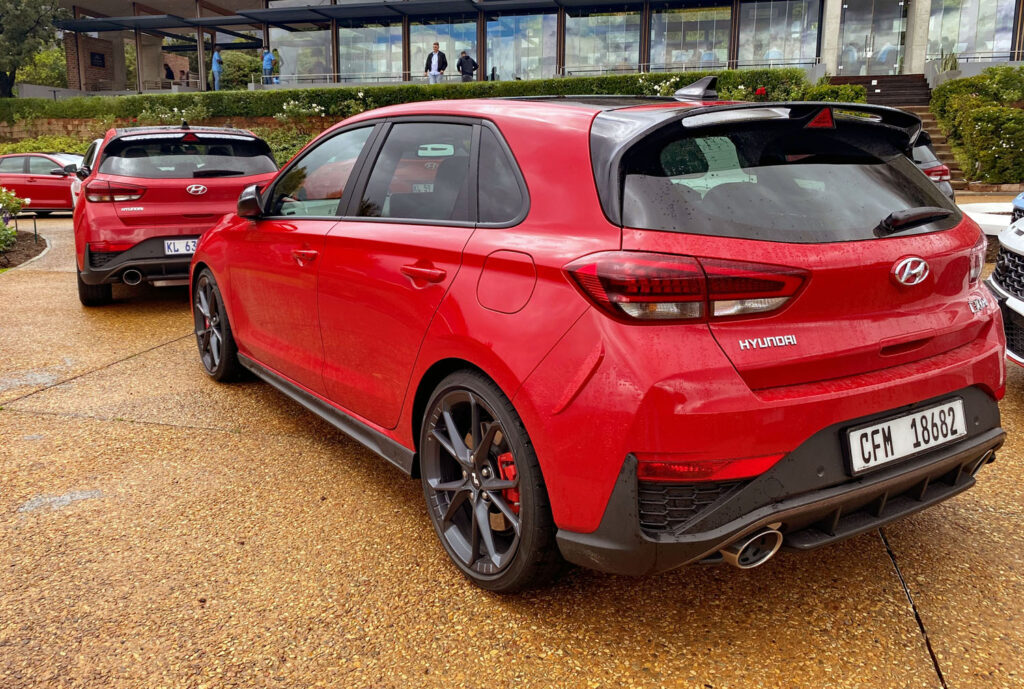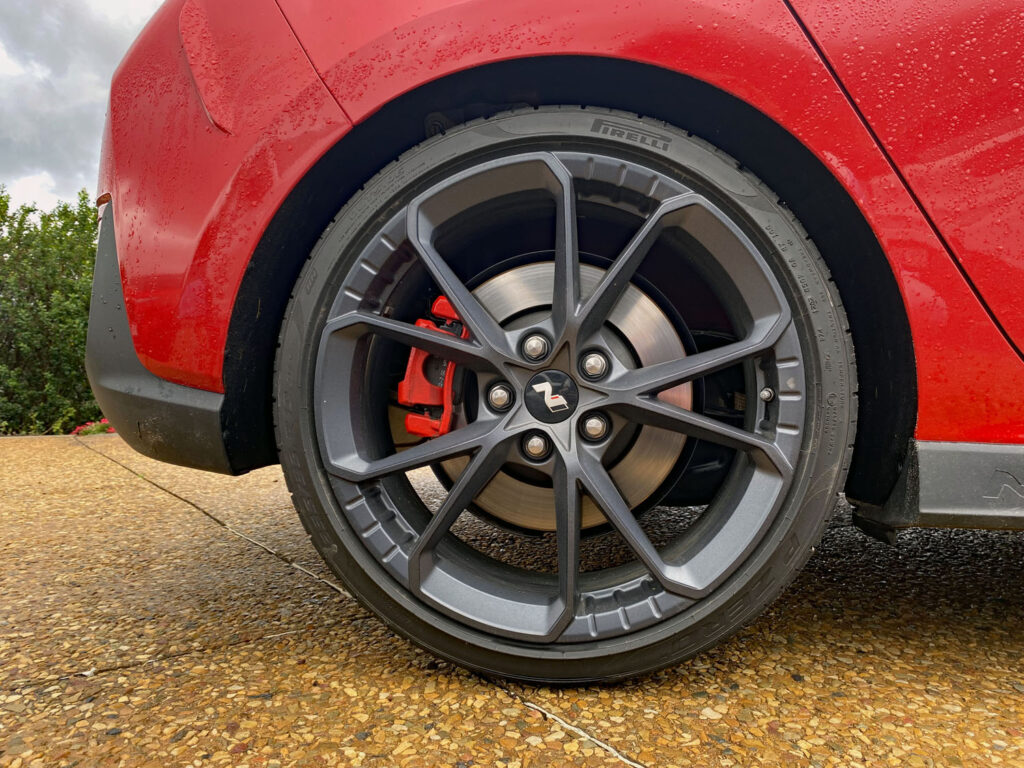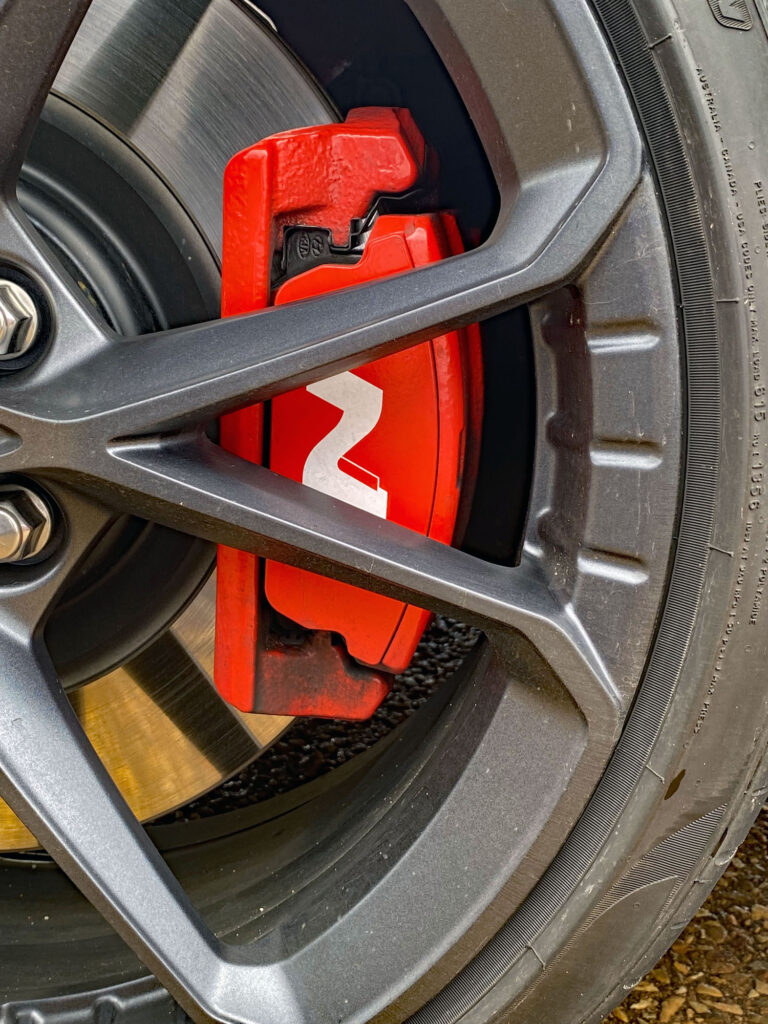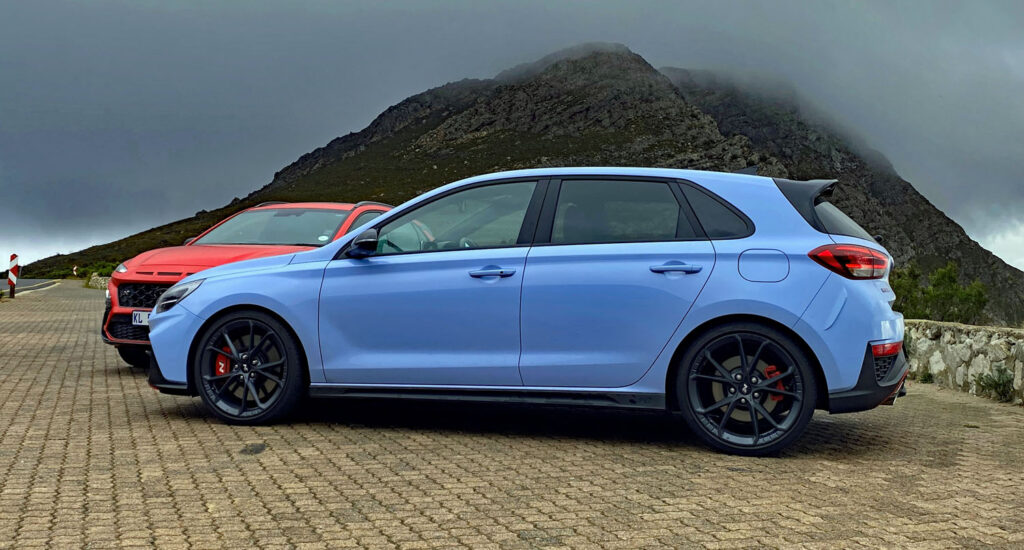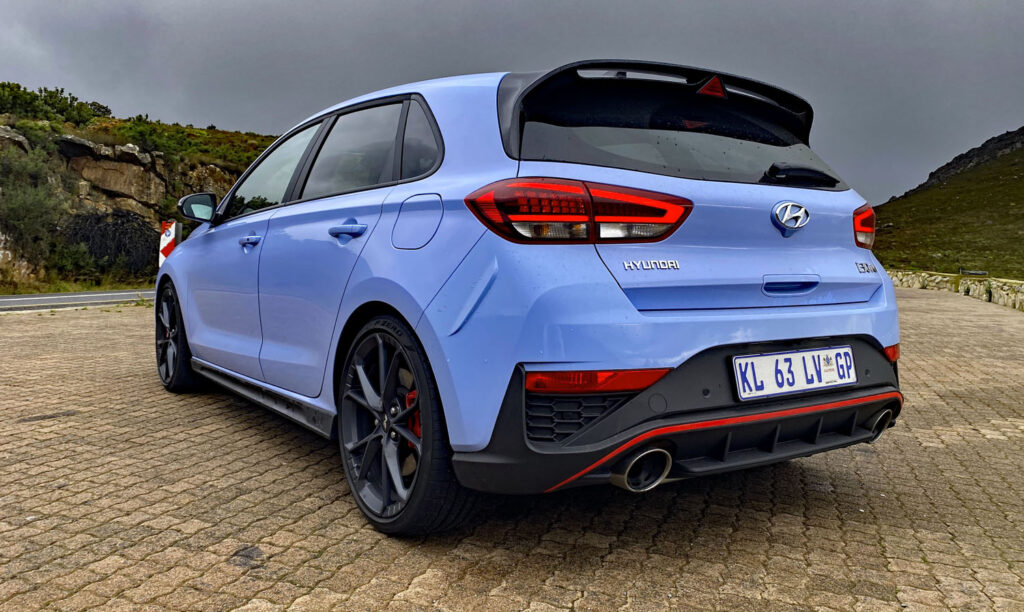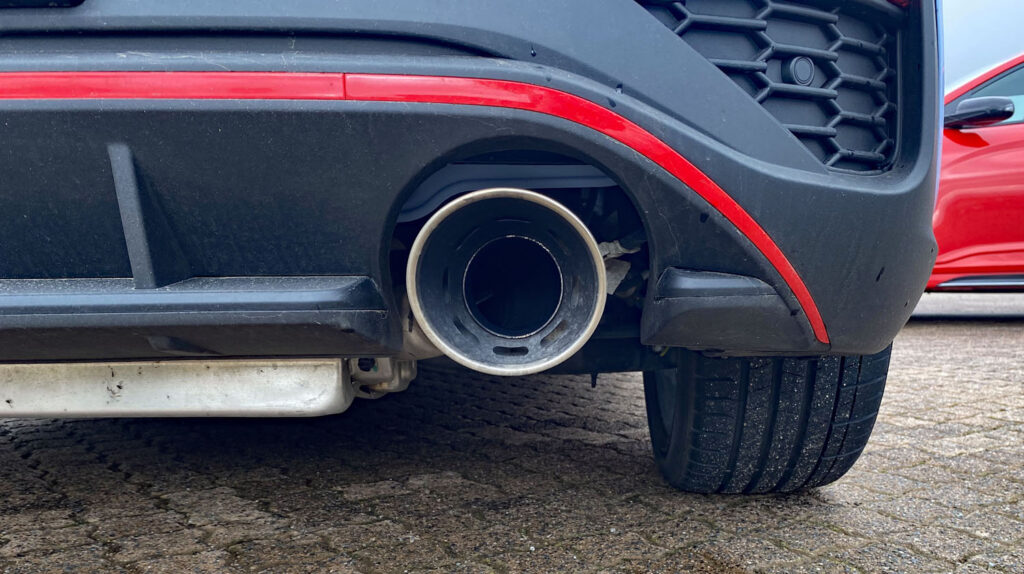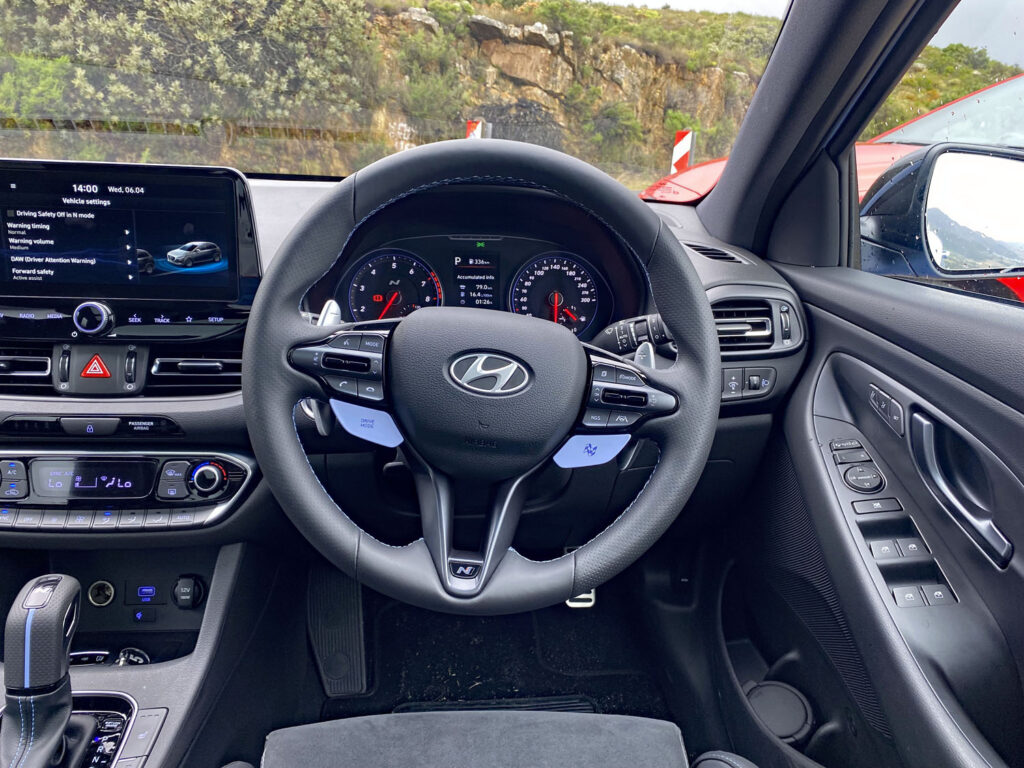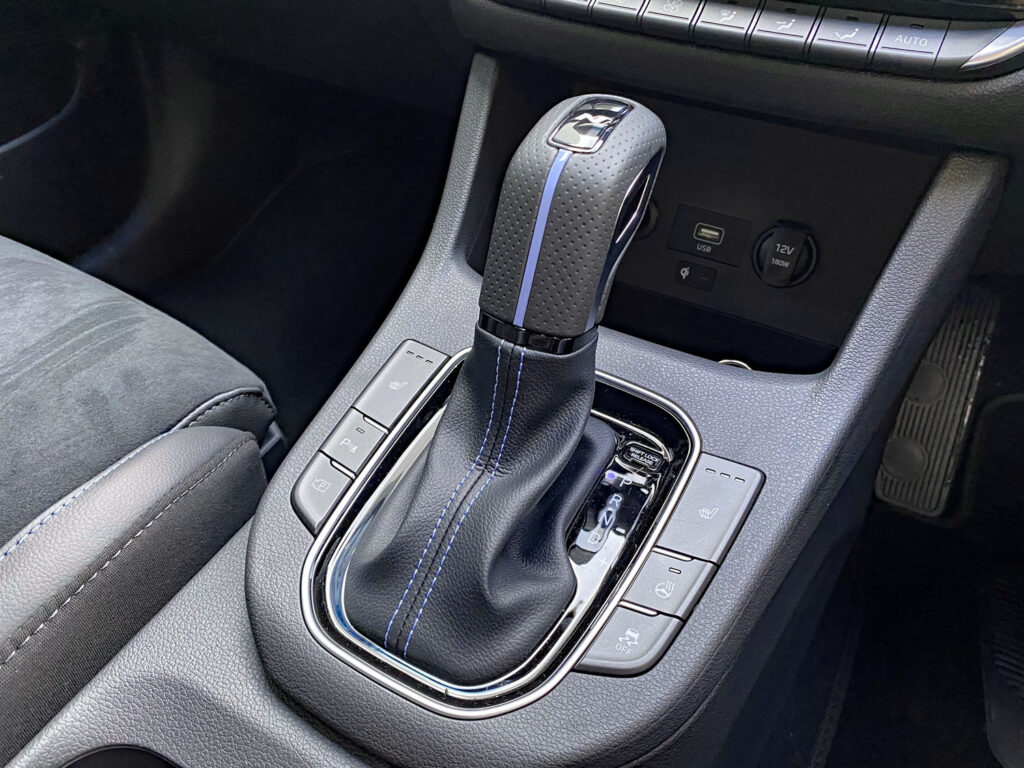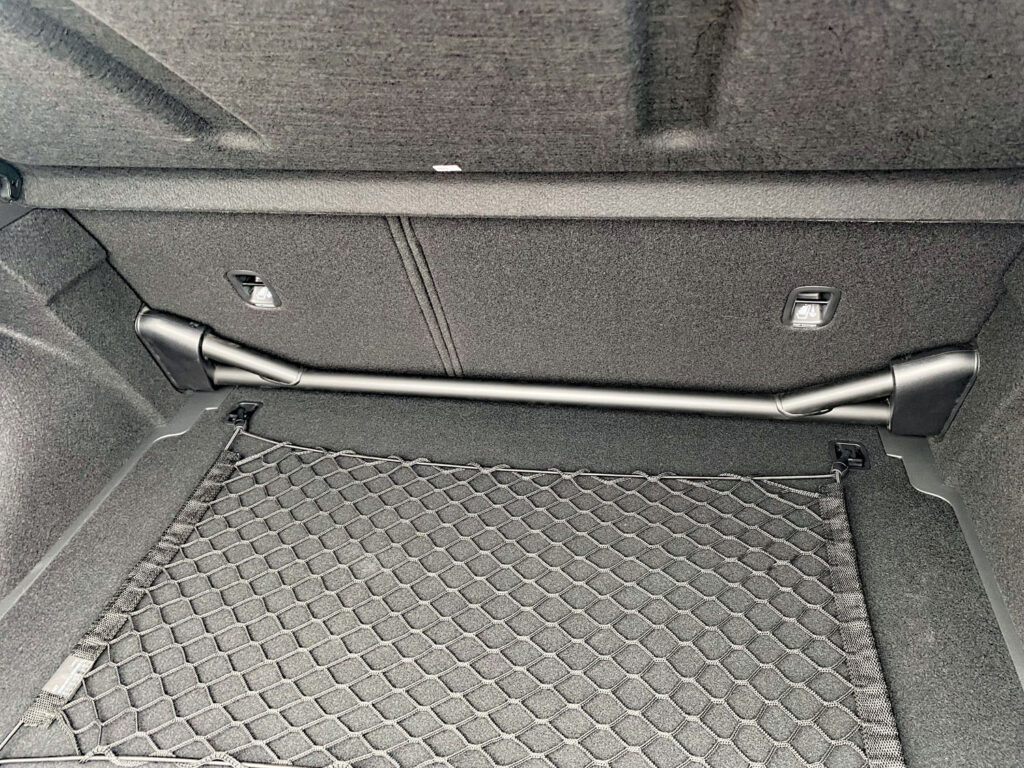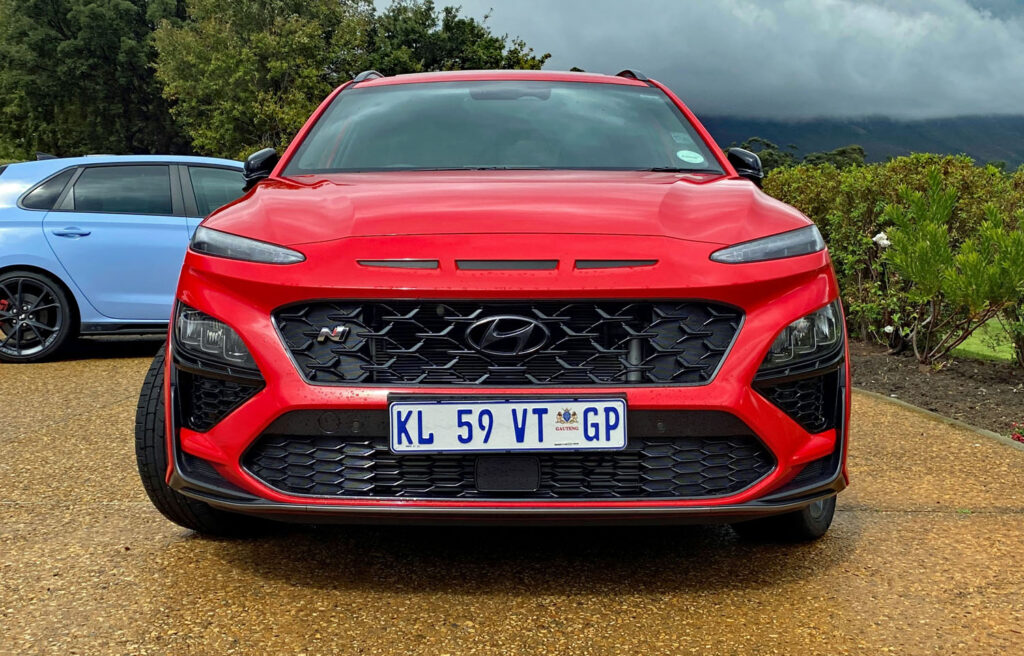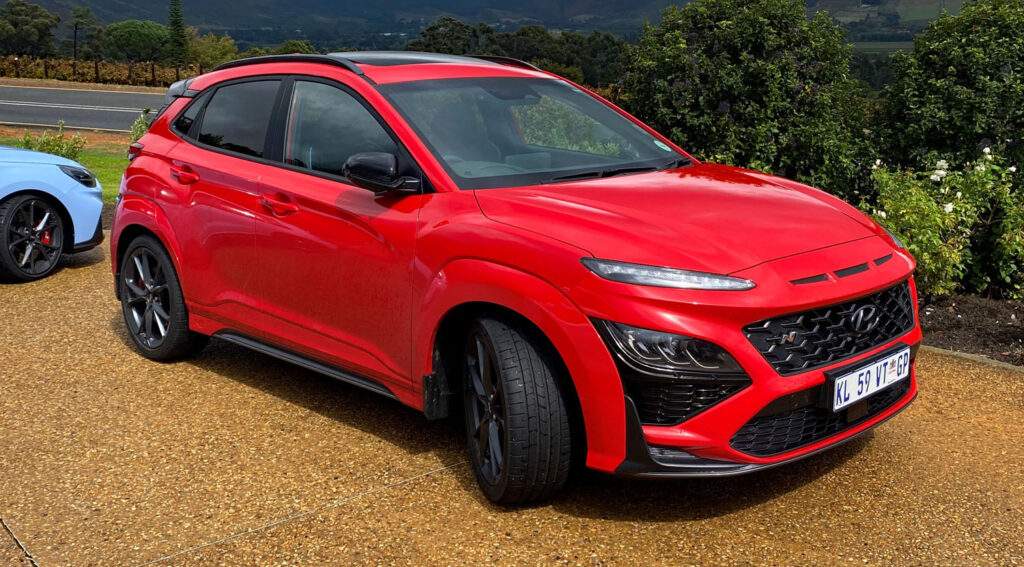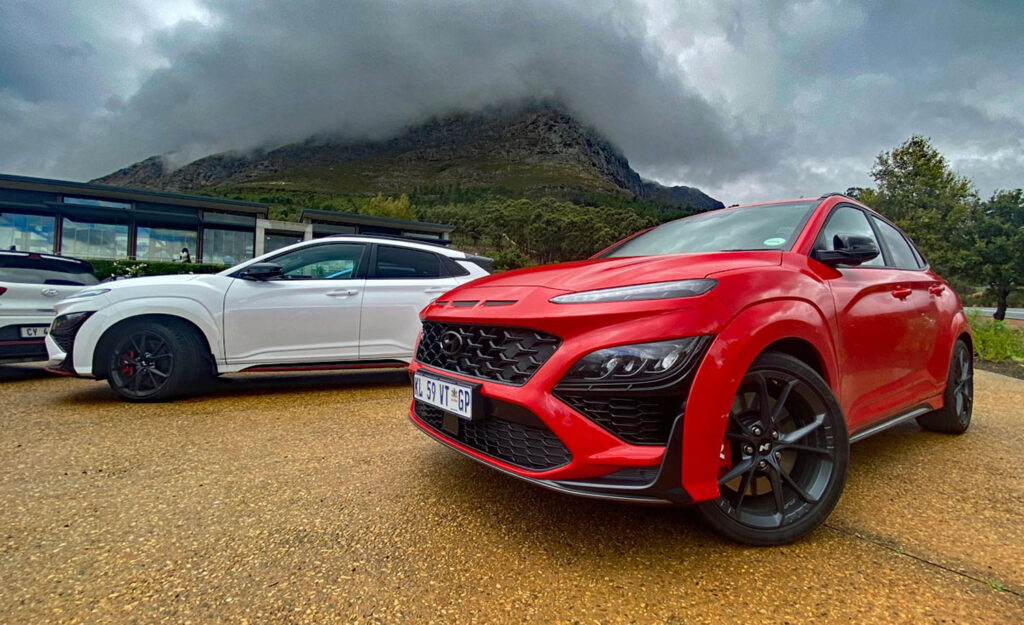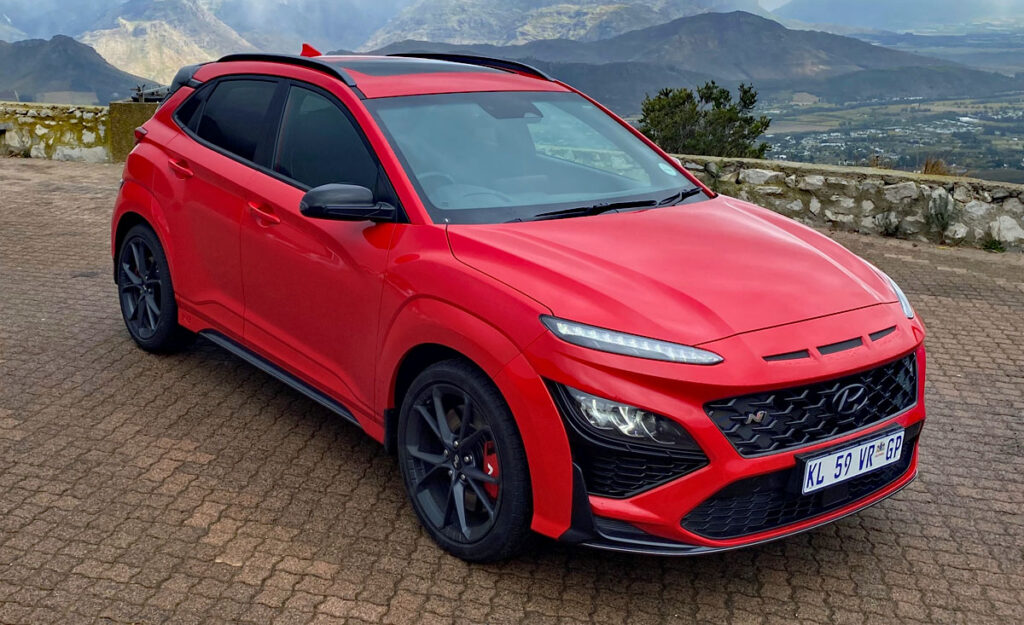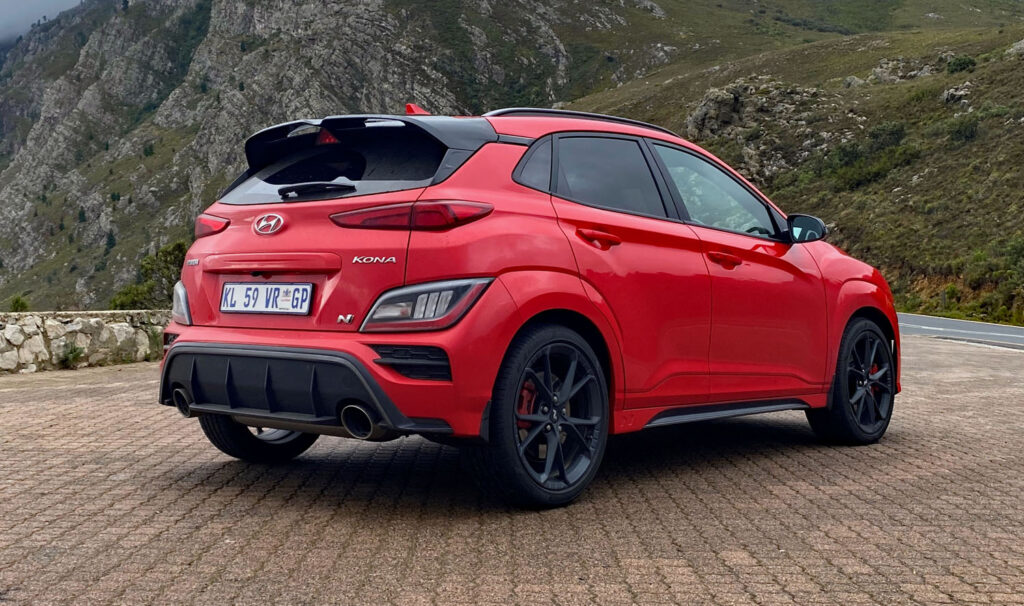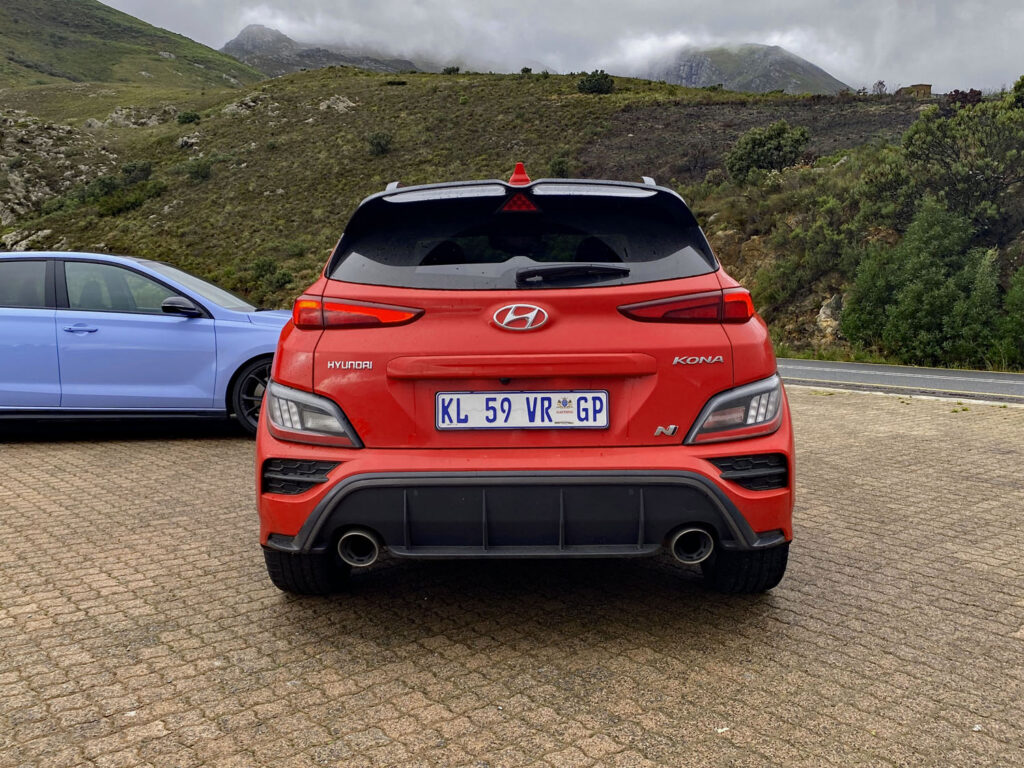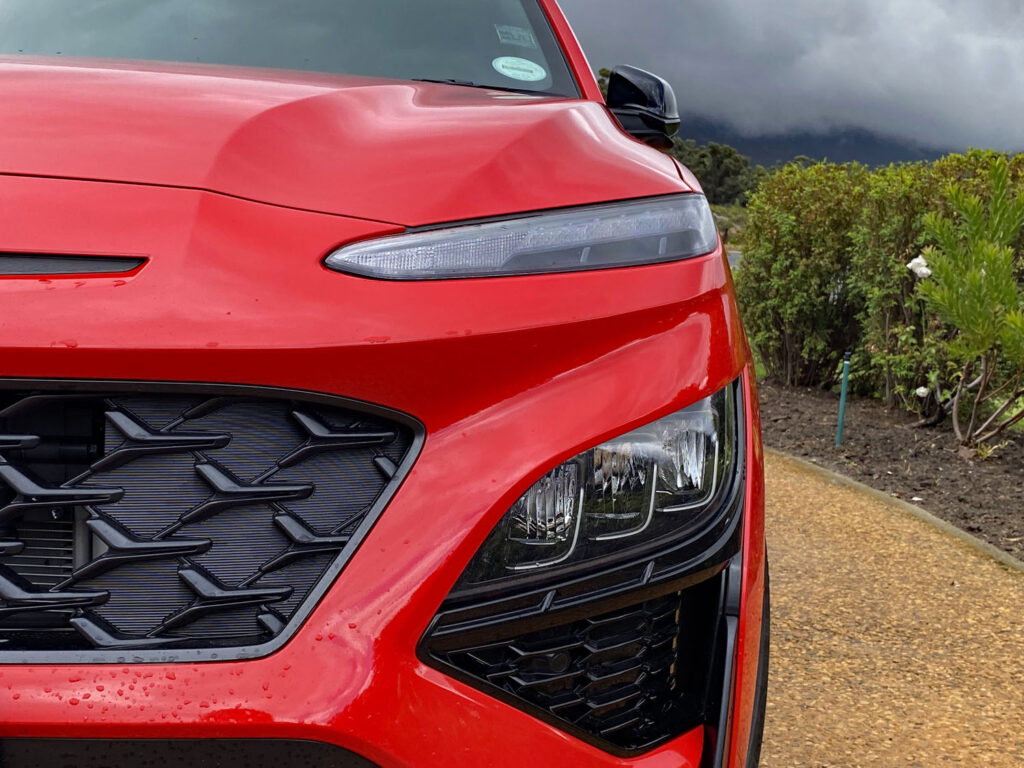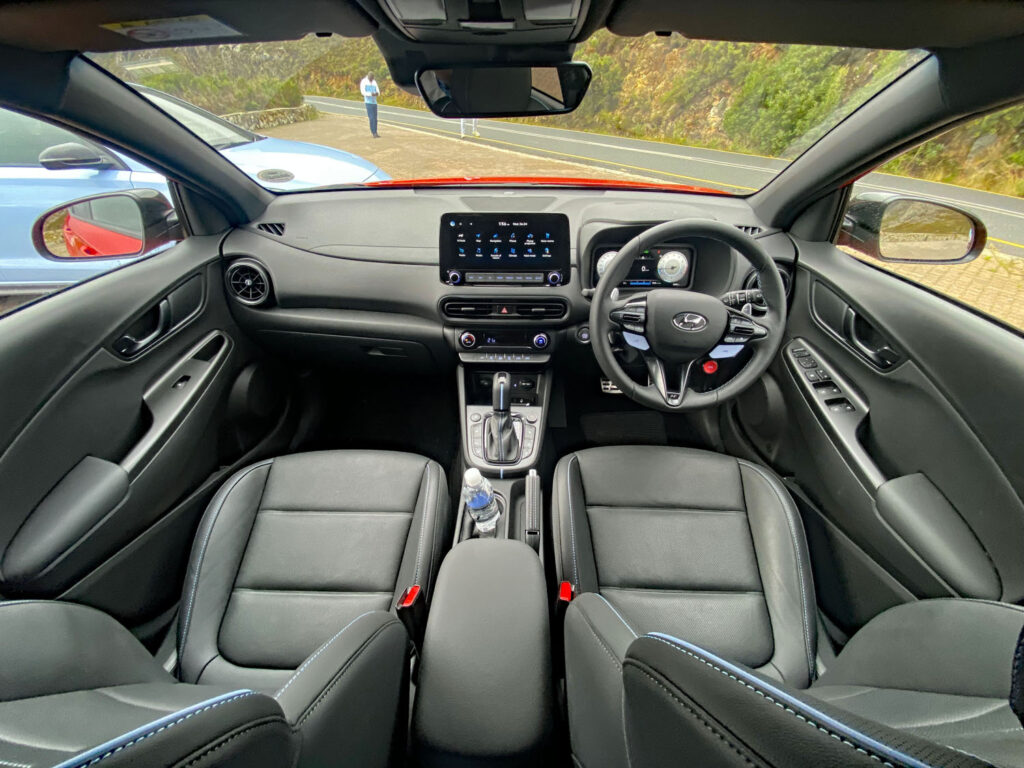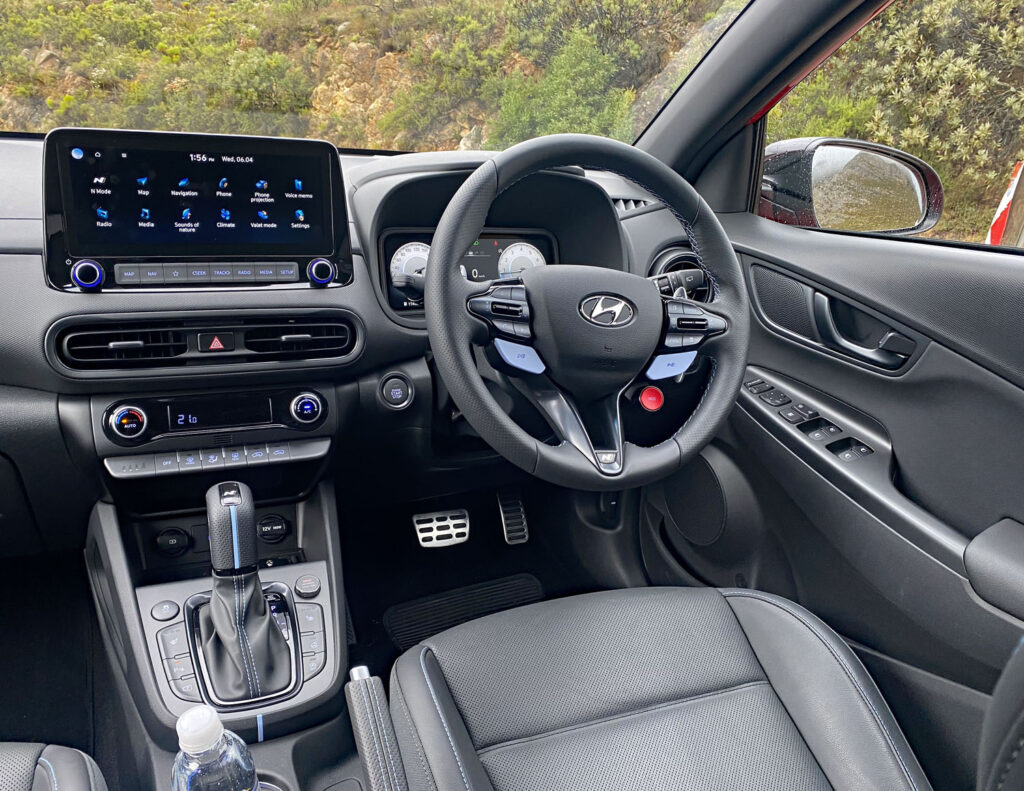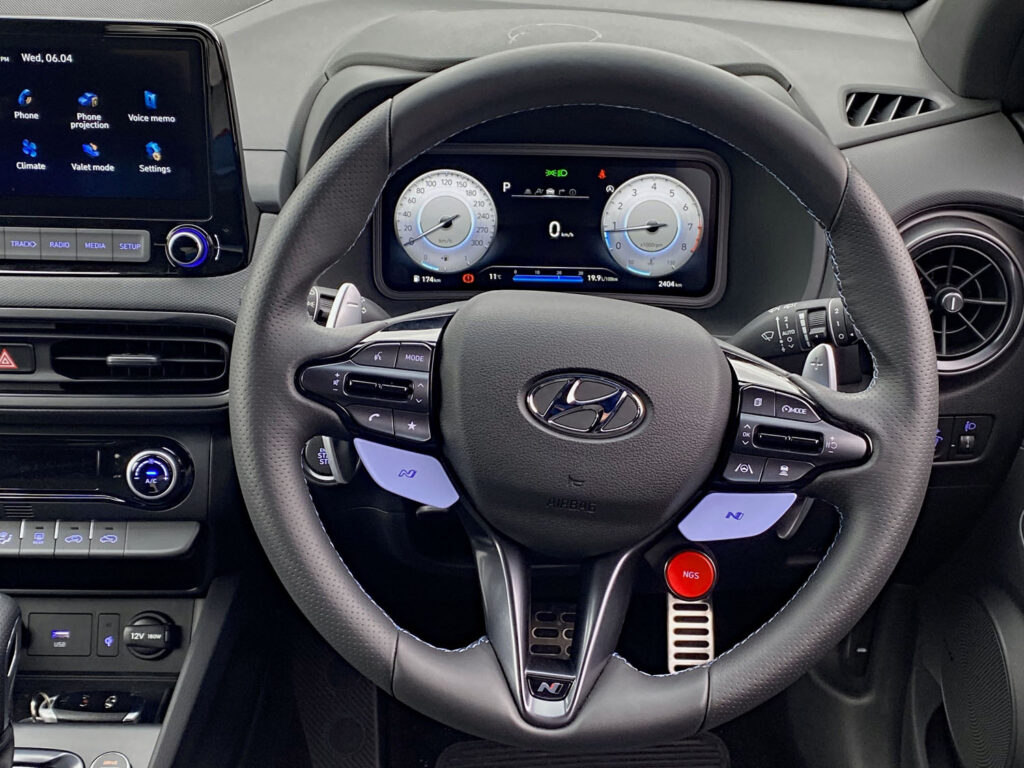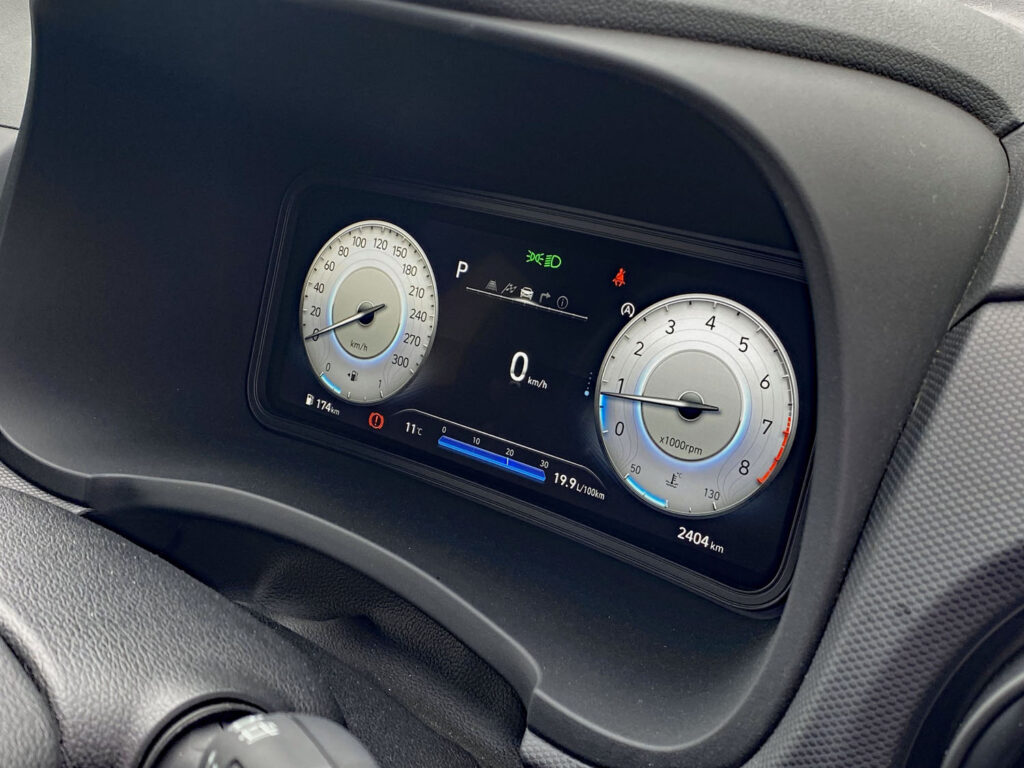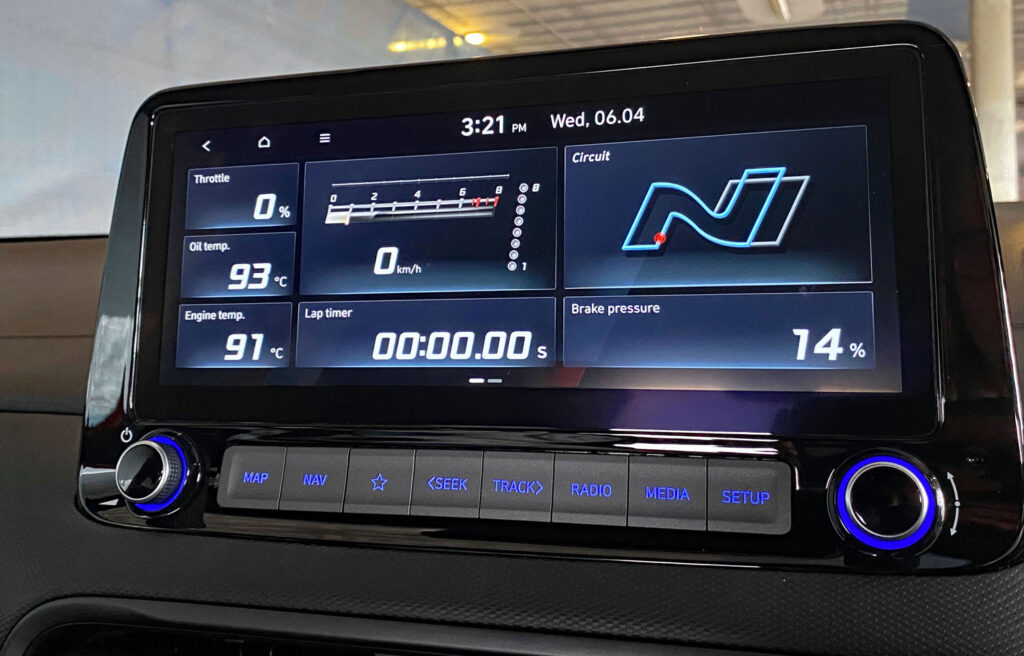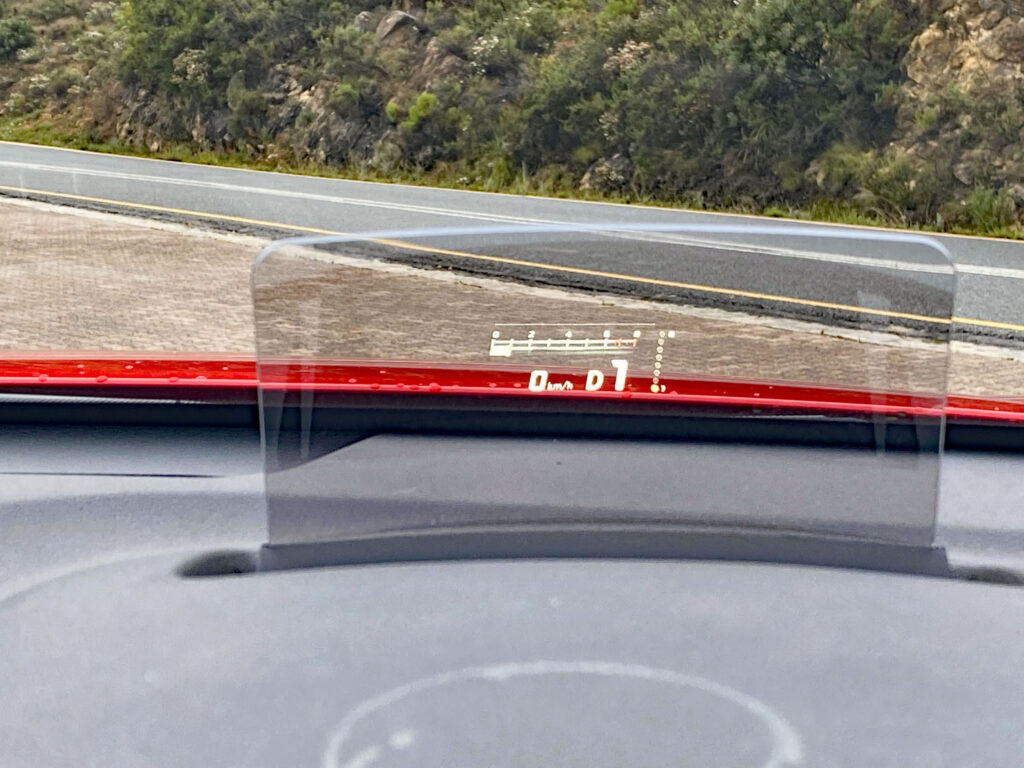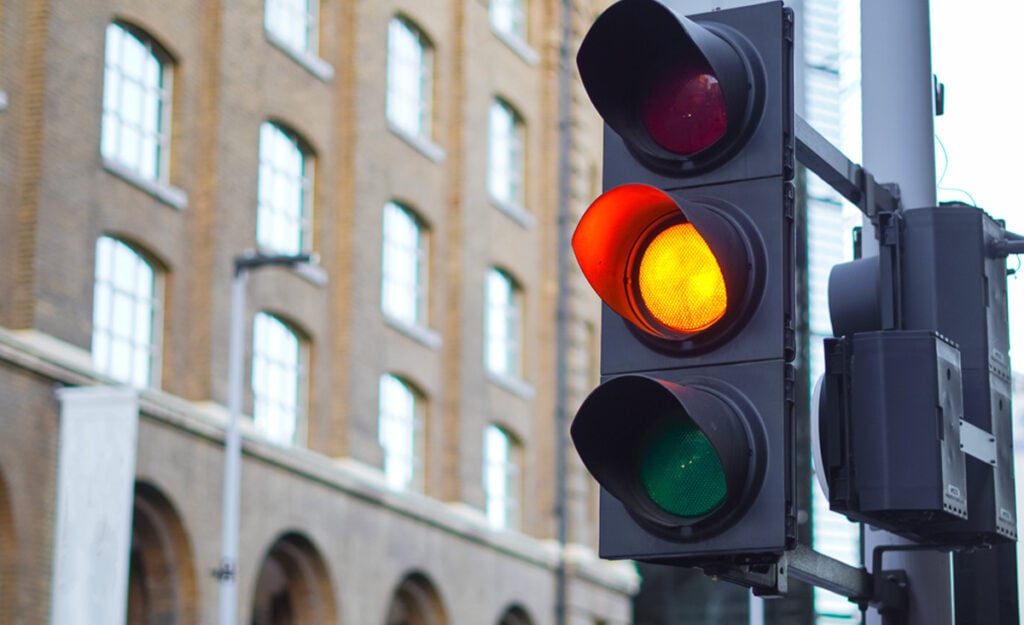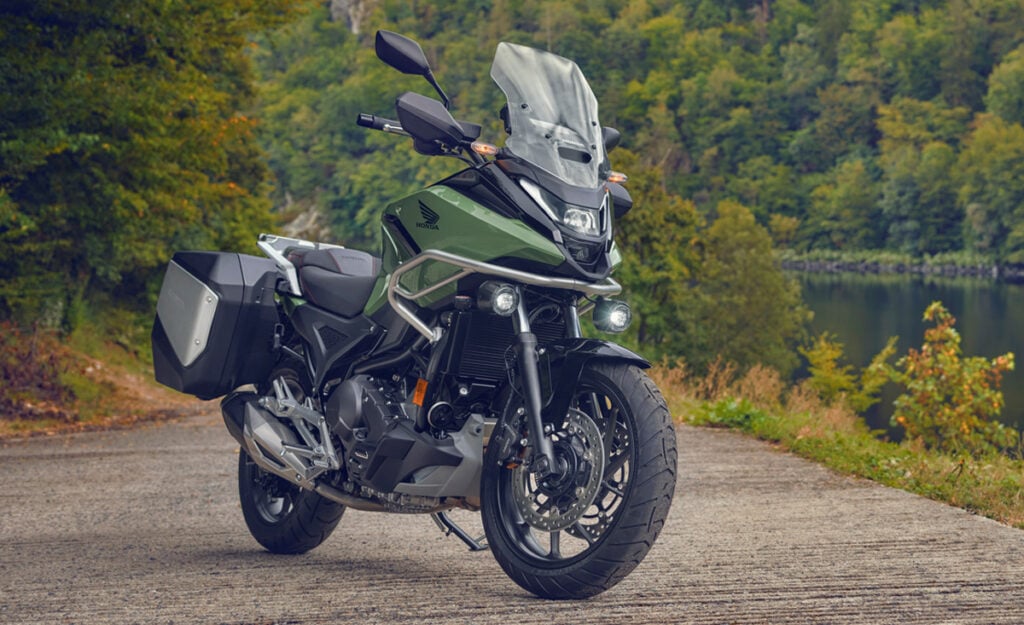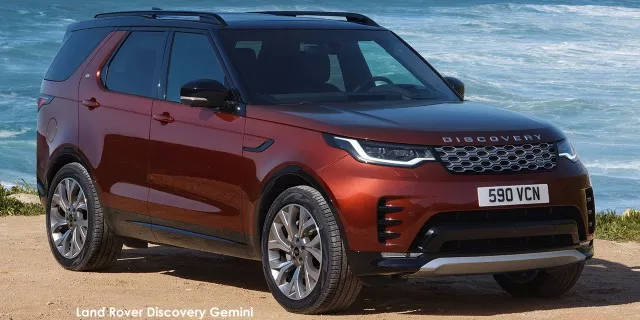Racetrack action in the new Hyundai N performance cars – How they compare
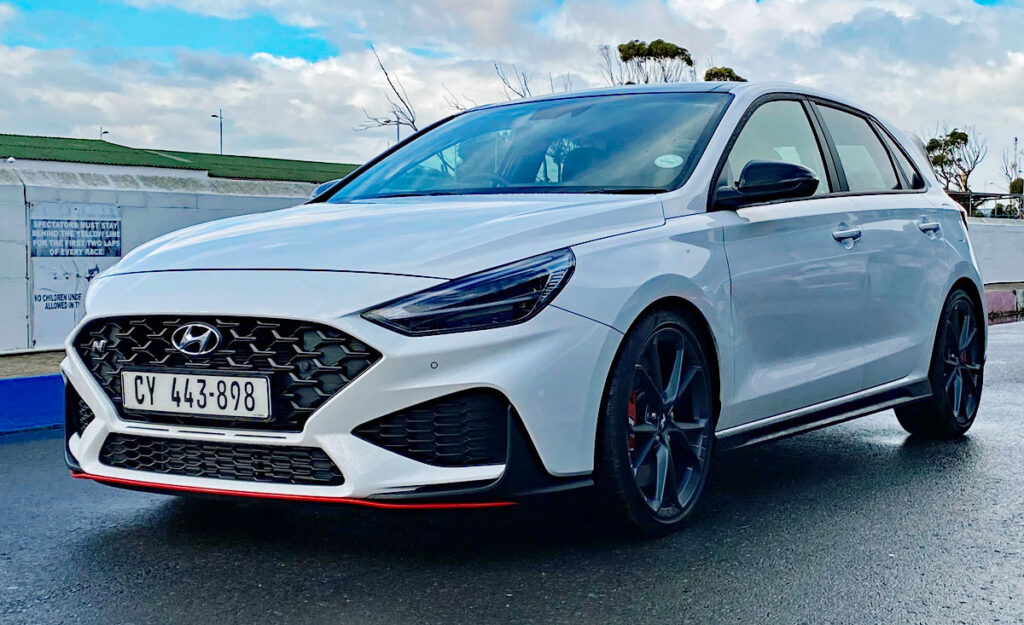
Hyundai has launched its high-performance N brand in South Africa and what this means is that for R750,000 – you can get a GTI-rivaling hot hatch or hot crossover.
Hyundai organised a day-long expedition in its exciting facelifted i30 N and first-ever Kona N, which started on Killarney racetrack in Cape Town and ended with us driving through virtually every season and most on-road scenarios the average driver will encounter daily.
As one would expect, the different body styles lend the cars different driving characteristics, and each one excels in its own way.
Track attack
The morning kicked off at Killarney and as soon as the first car took its lap the heavens opened and we were in for a wetter-than-usual few hours.
My turn came around and I hopped into an i30 N.
The hatch is not afraid to kick down in the rain and the official 0-100km/h time of 5.4 seconds did not seem farfetched.
The new “wet DCT” gearbox fitted to both N cars shift cogs lightning fast and the redesigned turbo makes it so that you don’t have to go looking for the 206kW of power, it’s just always there.
The i30 has a brace installed in the boot to enhance rigidity, too, giving the hot hatch excellent handling prowess even on a wet track, never stepping out of line in the slightest.
The “corner-carving differential” between the front wheels lived up to its name, letting the i30 carve through corners under the control of multiple drivers ranging from amateur to professional.
The Kona reaches 100km/h 0.1 seconds slower than the hatch, while the extra weight and ride height brings slightly more body roll.
Naturally, this affects track performance and the crossover turned out to be quite the handful around a damp Killarney, but still rather capable.
The Kona is quick, yes, but through bends it is much more willing to lose its grip and kick out the tail – which may or may not have happened, and may or may not have put a huge grin on my face.
After all, Hyundai has fitted the “N Grin Shift” (NGS) programme in these N cars to supply just that: grins.
Pressing the NGS button in both serves up an unneeded – but very welcomed – extra 7kW and kicks all on-board performance systems into high gear for 20 seconds, resulting in even more thrilling drives.
The active exhaust system on both – which is now twice the size of the pipes on the previous i30 N – also burble pleasantly at idle and bark beautifully as soon as the throttle is touched.
Although the Kona is planted at high speeds, road feedback through the steering wheel is extremely muted which makes it hard to discern what surface you are driving on by feel alone.
Road test
Setting off on the public road in a car that had minutes before been ripped around a track felt surreal, and there was no evidence of the thrashing it just went through at the hands of dozens of drivers.
The athletic nature carried over to the roads and the hatchback provided a slightly stiffer ride than its crossover counterpart, but both performed swimmingly.
However, when the magic spell of the powertrain wears off and the picking and prodding begins, it’s clear that the i30 is a facelifted model rather than a new creation.
Unlike the Kona, which is based on a new-generation product, the i30 was recently updated and mostly still has a previous-generation cabin.
The extensive use of black plastic makes the inside of the i30 look less premium than European competitors and the omission of a digital instrument cluster is another sign of a bygone era.
I did enjoy the sharp analogue dials with red flashing lights indicating when to shift, but found it a bit odd that the Kona has a 10.25-inch digital instrument cluster with awesome N-specific graphics, whereas the i30 does not.
The crossover also offers a heads-up display, a six-speaker “Krell” stereo, a cooler red NGS button on the steering wheel, and a stylish dash with soft-touch materials and circular vents – none of which can be found on the hatch.
The seats in both N cars are aptly body-hugging, good-looking, and comfortable, though, and are well suited for track and daily use.
The 10.25-inch infotainment display fitted to both then provides smartphone mirroring and several apps, but has one caveat.
Hyundai said the company that supplies mapping software specifically for these large systems does not have the maps for South Africa, and the on-board navigation features in the current N cars therefore do not work in the country.
Now, clicking the “Map” or “Nav” button brings up a beautifully detailed map of Hyundai Design studios in Germany, which remains the central point of the screen no matter where you drive in South Africa.
Verdict
The obvious difference in these N cars is their body styles, which translates to different on-road personas and target markets.
In short: The Kona is the nicer one to be in; the i30 is the nicer one to drive.
There are a few minor points to improve on, but when taking the whole package into consideration, the Hyundai vehicles offer more high-end technologies and power than most of their direct price competitors, making them an appealing proposition.
The hot hatch game is slowly picking up again in South Africa, and Hyundai’s new N cars came to play.
